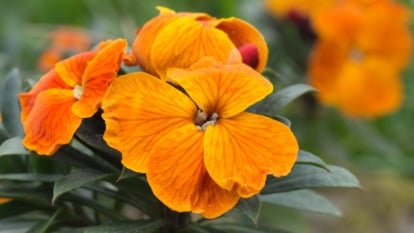Wallflowers Overview
|
|
|
What are Wallflowers?
Wallflower is a tough little plant that can grow in harsh and unforgiving situations. Its common name stems from the plant’s ability to sprout up in surprising spots. It’s not uncommon to see this little flowering plant pop up between bricks or cracks in concrete.
The Erysimum genus encompasses many species, including herbaceous perennials, annuals, and subshrubs. Some species are popular for growing in the garden, while most regard others as wildflowers. These plants are drought tolerant and low maintenance, and interestingly, they are related to broccoli!
History
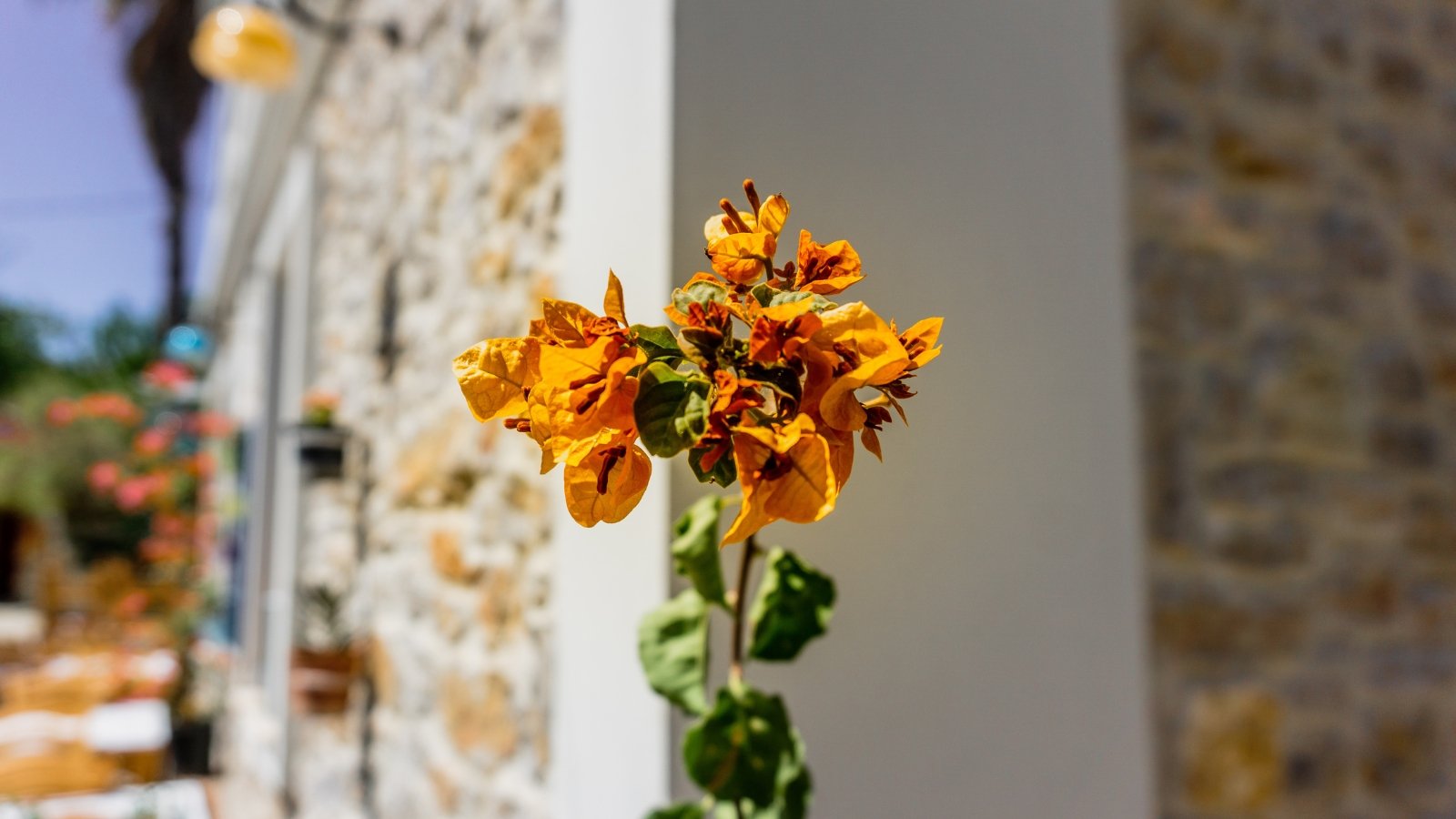
Few plants rival wallflowers when it comes to garden plants that have been in cultivation for a long time. Records exist of this plant’s use in medicinal preparations as early as 70 AD. In terms of its ornamental use, this plant has been cultivated in gardens since medieval times at least, and likely much longer.
English gardeners have grown this plant in their spaces since the 1500s. by the 1700s, they made their way into gardens in the United States. The plant’s ability to grow from walls and other difficult terrain may be a reason for its longstanding popularity.
Their strong and pleasant fragrance made them a popular flower in nosegays. These small bouquets were historically held in one’s hand and used to shield the owner from offensive odors. They have a rich and storied history in folklore, symbolizing faith in adversity.
Native Area
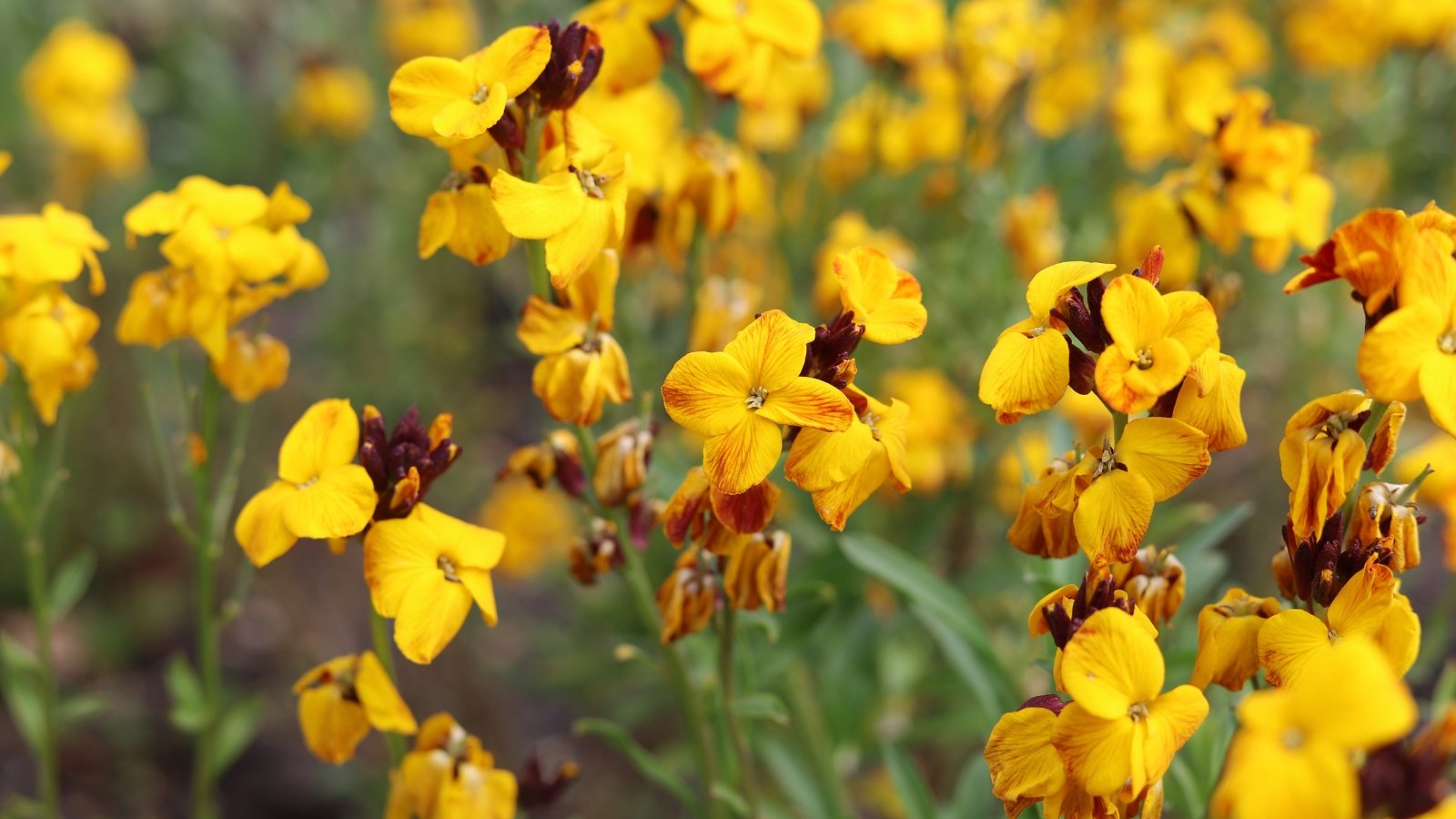
These plants are native to at least three continents. Various species show up in Africa, Europe, and North America. They are potentially native as far south as Costa Rica. Their natural habitat is far-reaching. You will find wallflowers growing in sand dunes, alpine meadows, desert canyons, cliffsides, and prairies.
Characteristics
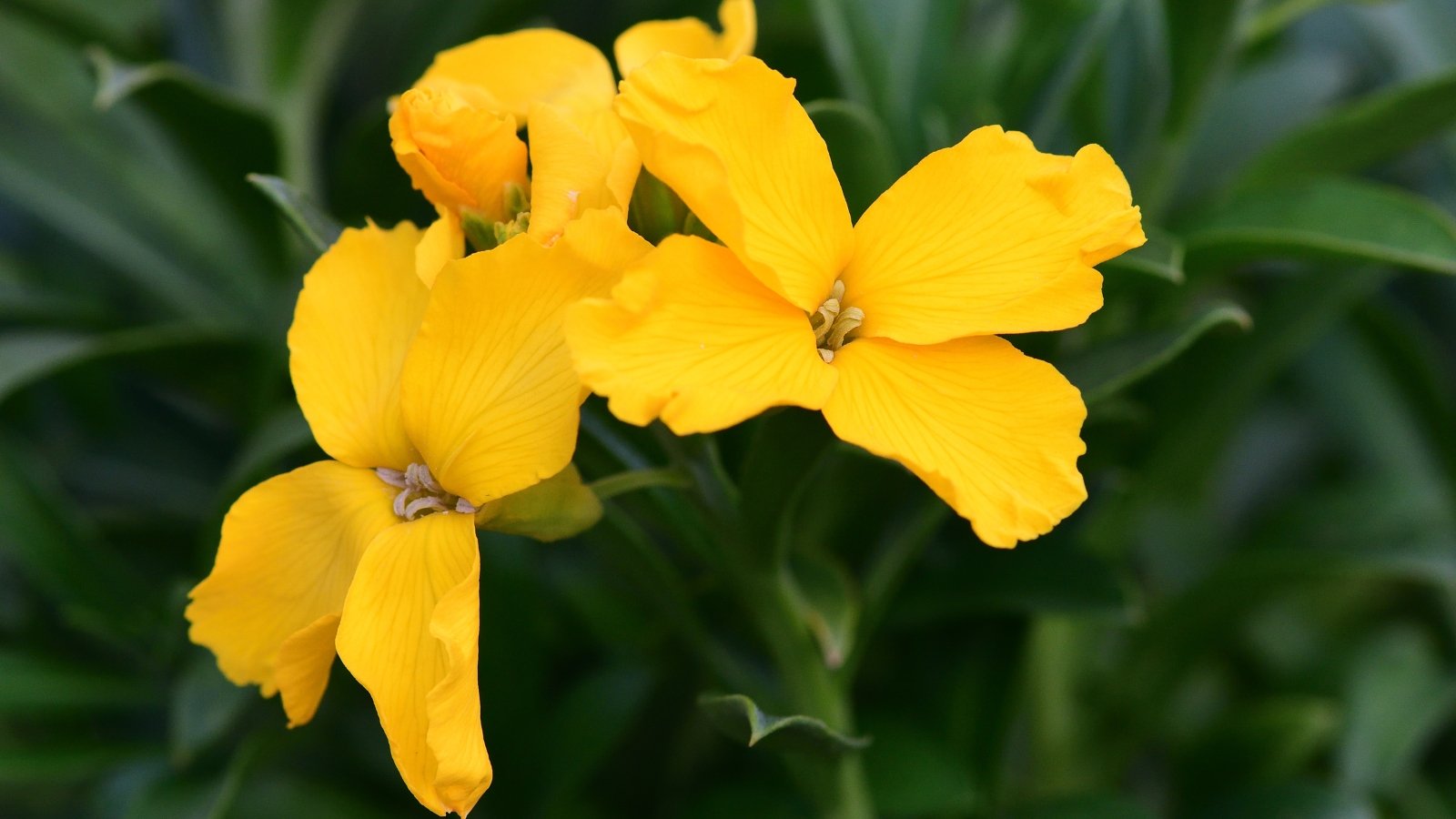
Wallflowers bloom in various colors from late spring to early summer.
Erysimum is a member of the brassica family, which includes cabbage and broccoli, among others. There are species that fall into the categories of annual, perennial, and sub-shrub. Their stems are erect with a fine coating of hairs. The leaves are broader toward the base of the plant and become narrower near the top.
The flowers grow in clusters at intervals along the stems. The four-petaled flowers typically appear in warm shades of yellow, red, and orange. They can also be blue, purple, or white, and they have a sweet and pleasant fragrance. The flowers bloom from late spring to early summer and are very attractive to pollinators.
Where to Buy Wallflowers
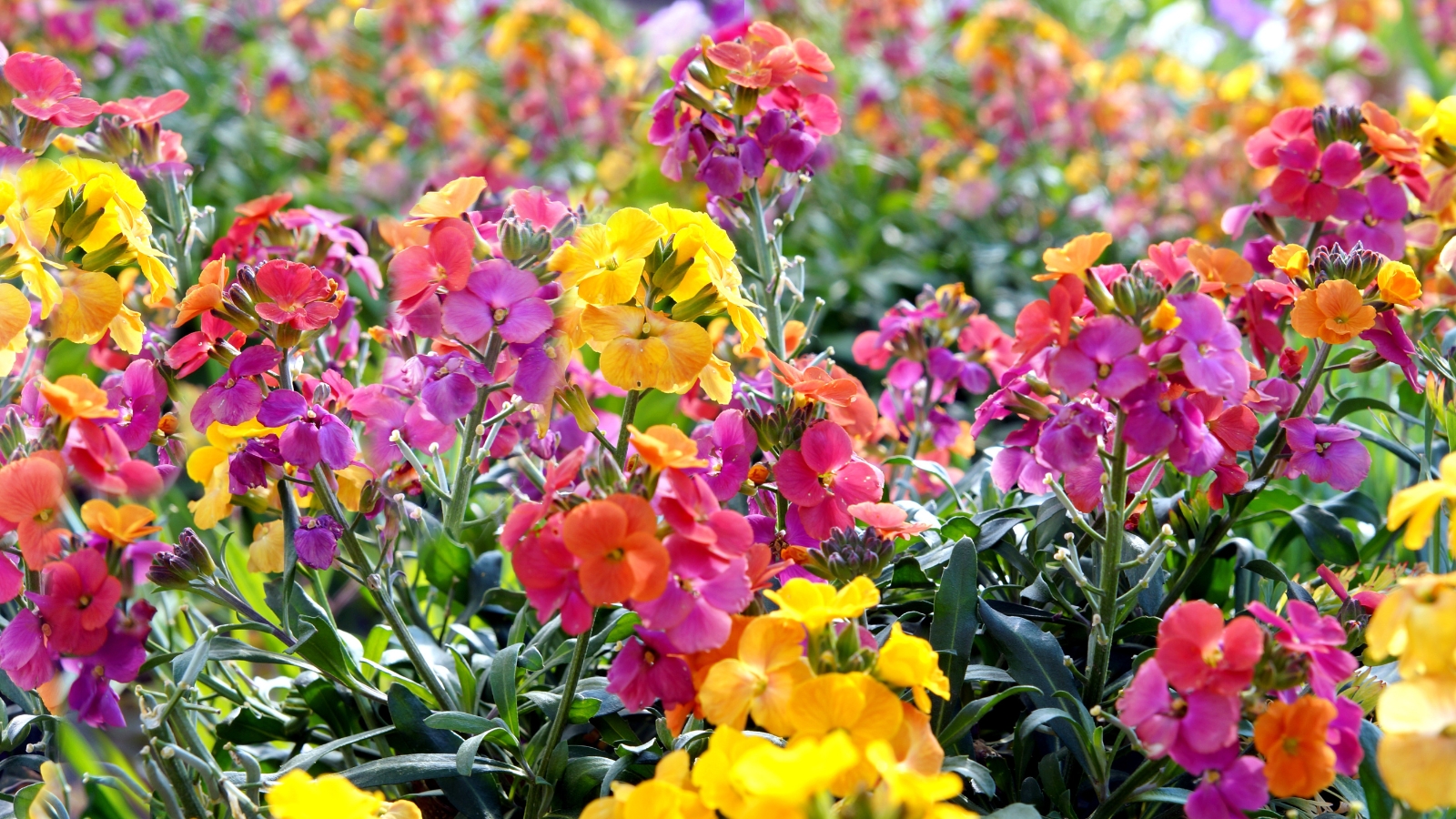
Wallflower plants are readily available at many nurseries and other plant retailers. They are hardy in Zones 3-10 and easy to care for, which makes them a very popular plant in a wide range of climates. You can also find a wide range of these plants at online retailers.
Planting
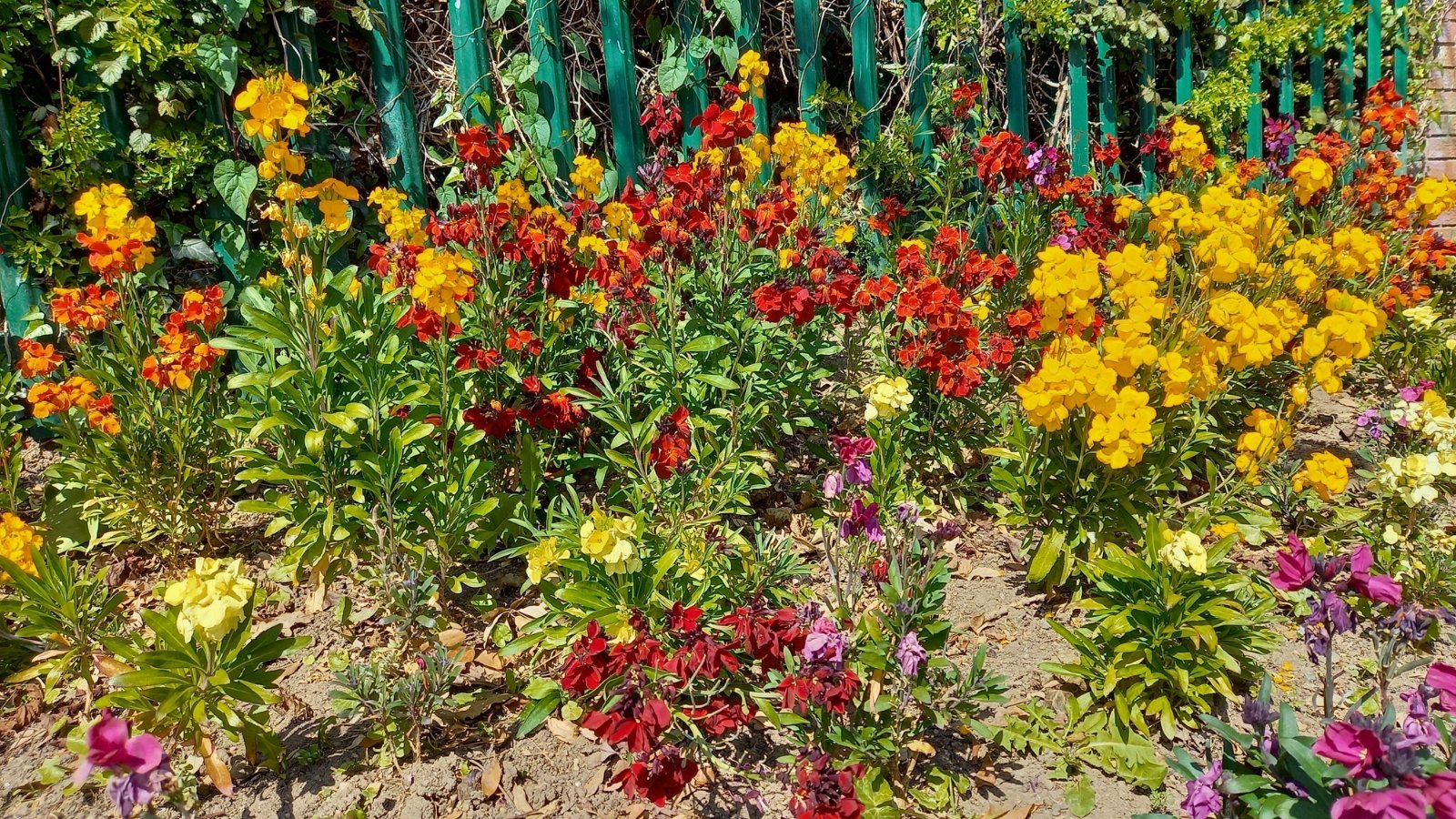
Determine planting time for your wallflower plants according to the type and climate. Growing from seed is the most common way with biennial varieties. Start your seeds 10-12 weeks ahead of your last frost date. Plant your seedlings in early fall for blooms the following spring.
Perennial wallflowers can go in the ground any time of year. Spring is ideal as it gives them a full growing season to establish roots before winter. In warm climates, you can plant your seeds in the fall, leaving them uncovered as they need light to germinate. Space your plants 10-12 inches apart in the ground or six inches apart in pots.
How to Grow
These plants are easy to care for with just a few considerations. They need protection from strong winds, for one thing. They also need proper drainage and will not thrive in wet environments with soggy soil.
Light
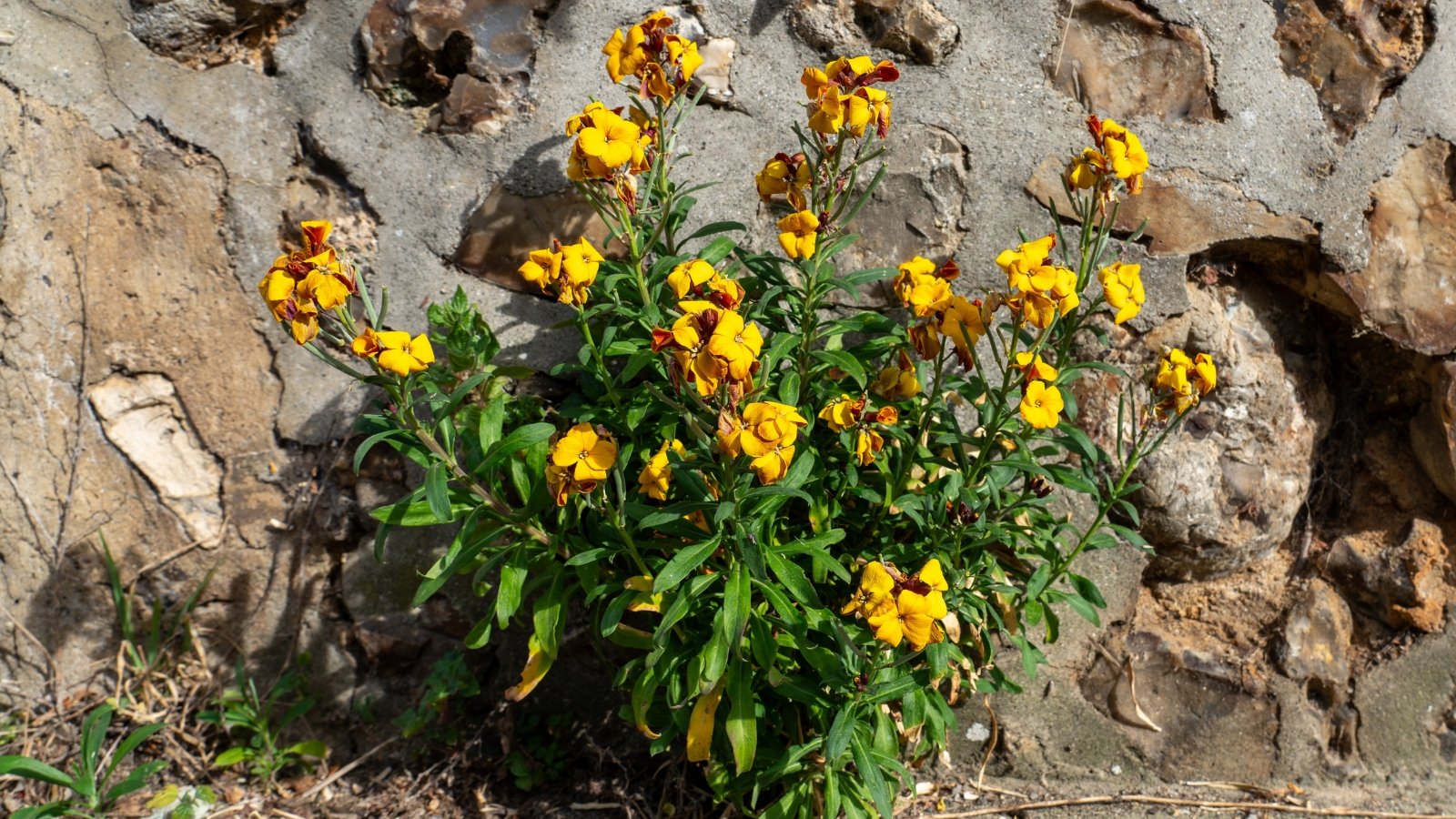
The exposure for these plants varies by climate. For the most part, full sun is the indicated level of exposure. In warmer climates, such as zones 8-10, where summers are very hot, partial shade is best. Give your plants sun in the morning and shade in the afternoon in warm climates.
In cooler climates, it’s best to plant your wallflowers in a full-sun location. This will result in the best blooming habits and the fewest issues with fungal diseases.
Water
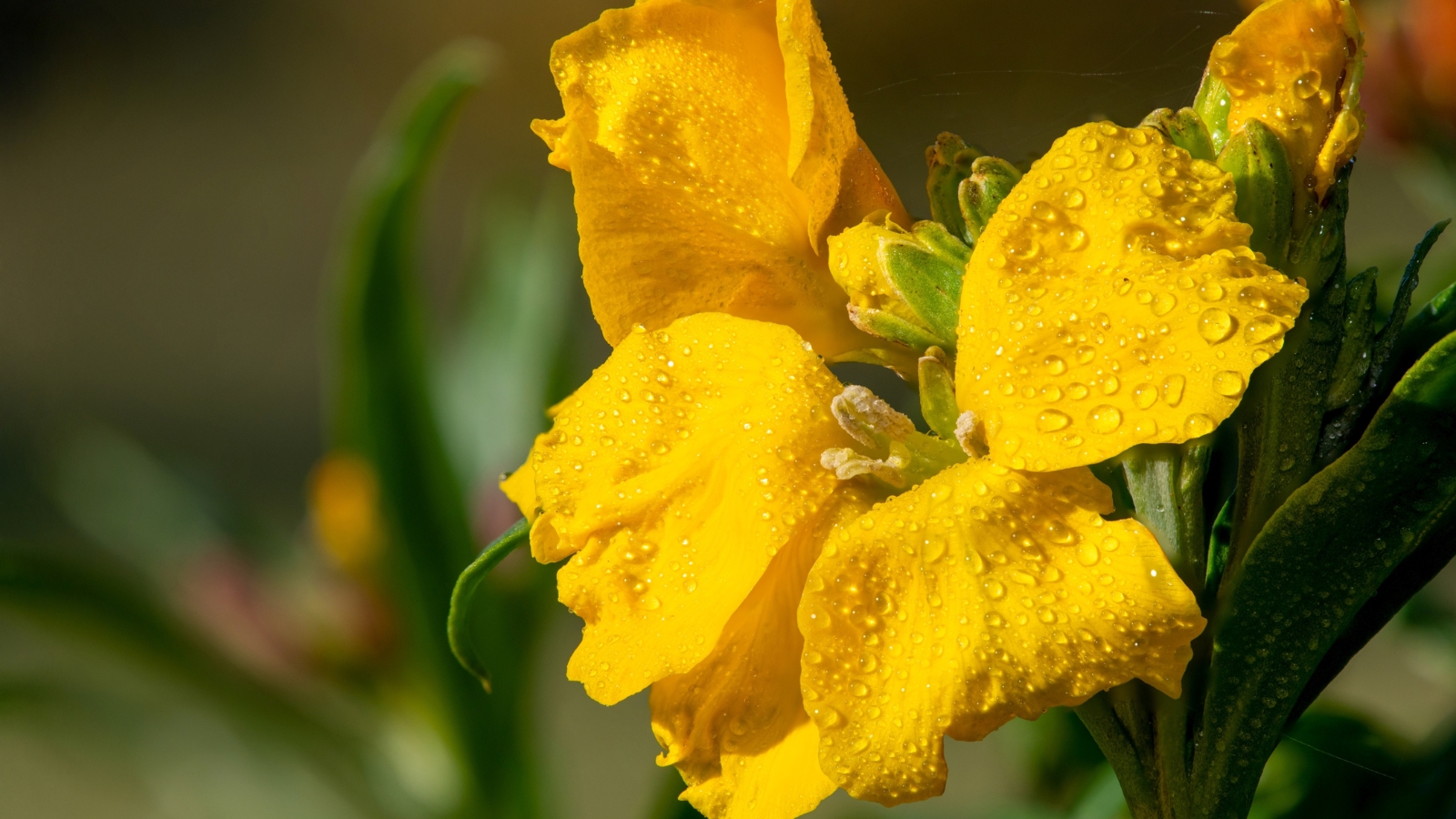
Newly planted wallflower plants will need more water than established plants. Once established, you will rarely need to water them. Potted plants will need watering more often as the soil dries out faster.
Soil
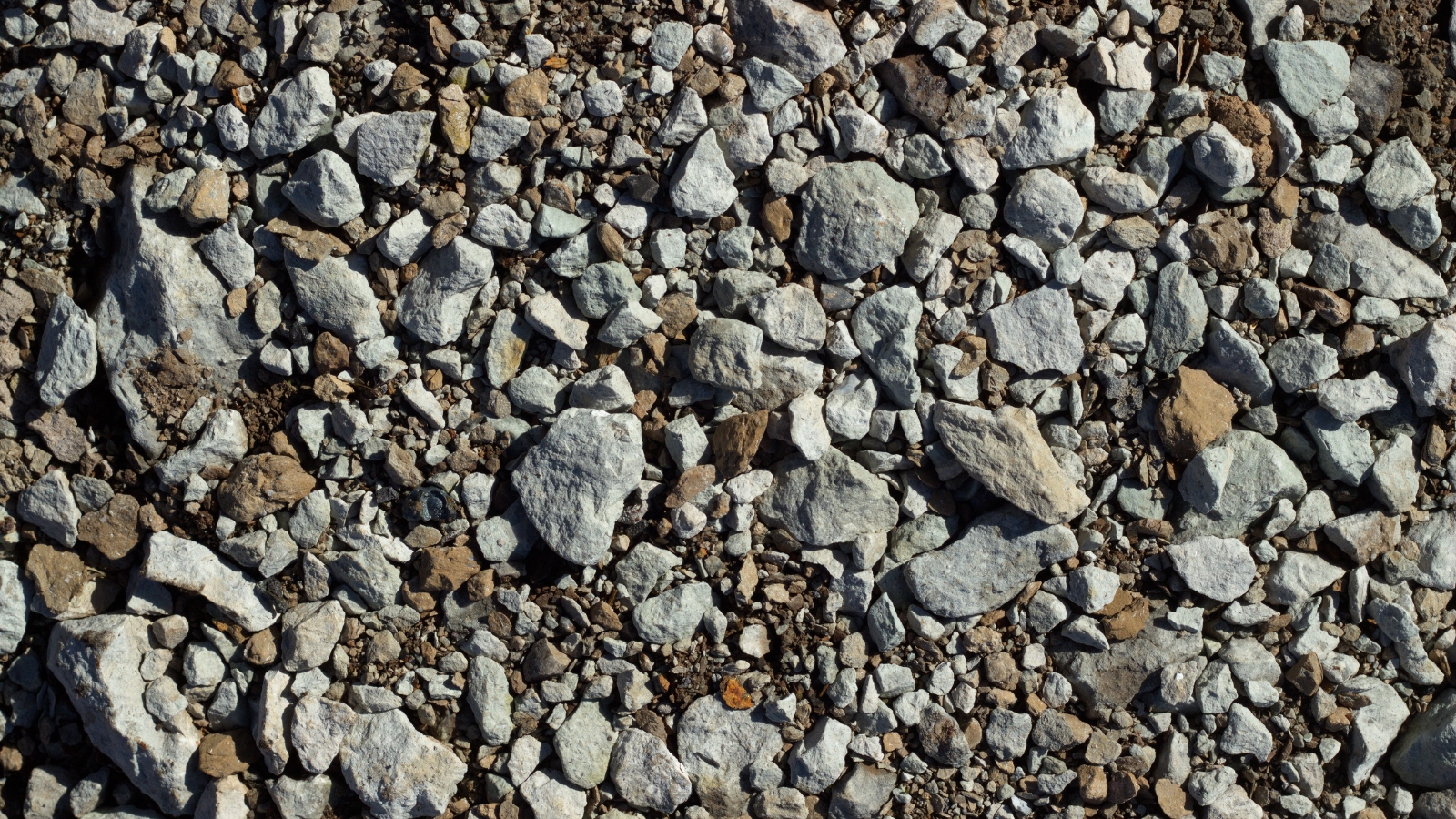
This is one of the rarer plants that doesn’t mind and actually thrives in alkaline soil. While many plants would find this to hinder nutrient absorption, this one doesn’t mind a pH as high as 9.0.
More important than pH is that the soil is well-draining. Dry, sandy, rocky soil types work well for this plant, as do medium-dry soils. Poorly draining soil will kill this plant quickly by way of root fungus.
Temperature and Humidity
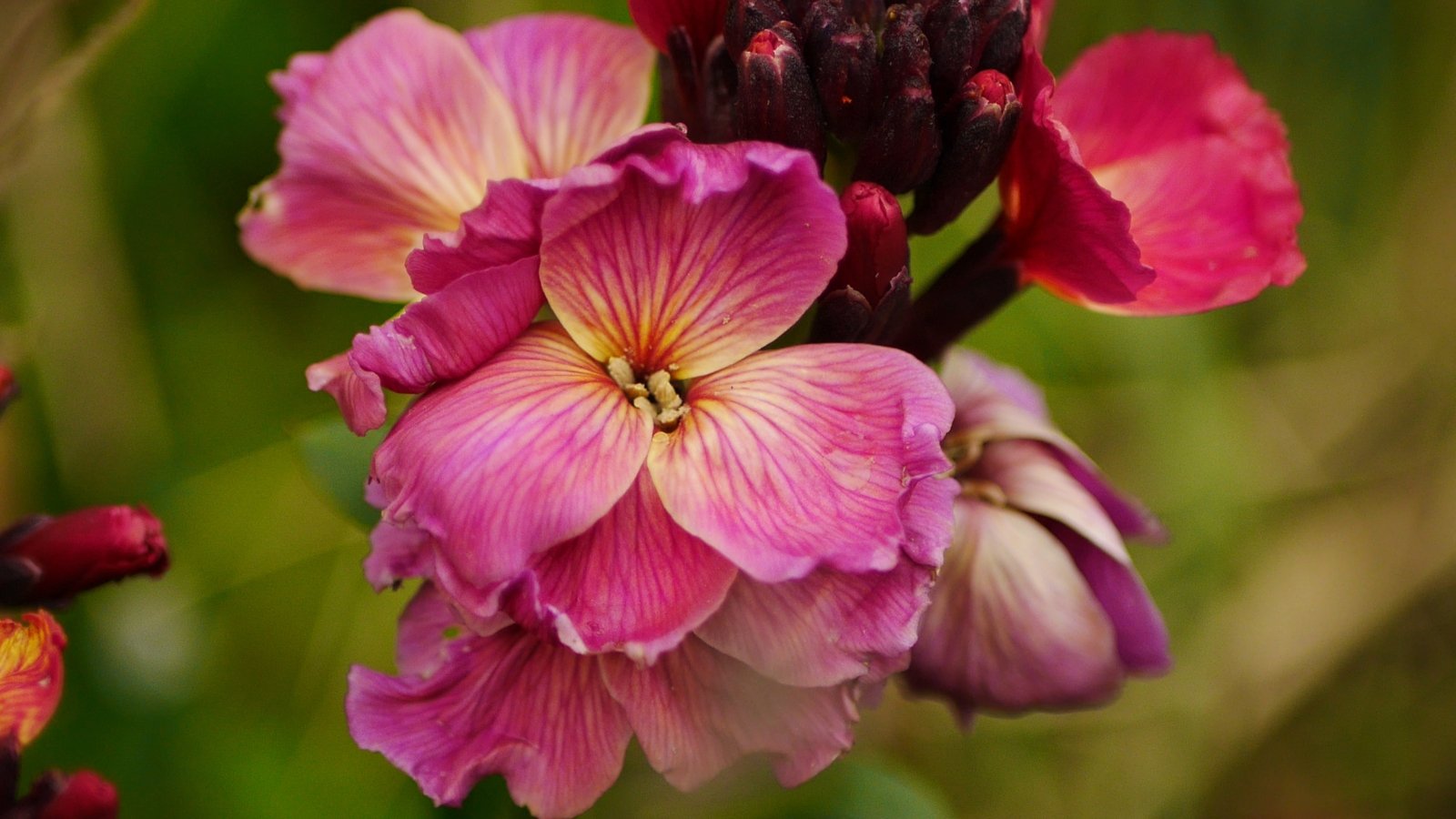
These plants will grow as annuals in just about any climate. Inside their range, they are evergreen in warmer climates and lose their foliage in winter in cooler areas. They do have very good heat and cold tolerance.
Hot and humid conditions are not a recipe for success in this case. This plant prefers cool, dry evenings. Heat during the day is tolerable, but again, planting in partial shade will help this plant in areas with very hot summers.
Fertilizing
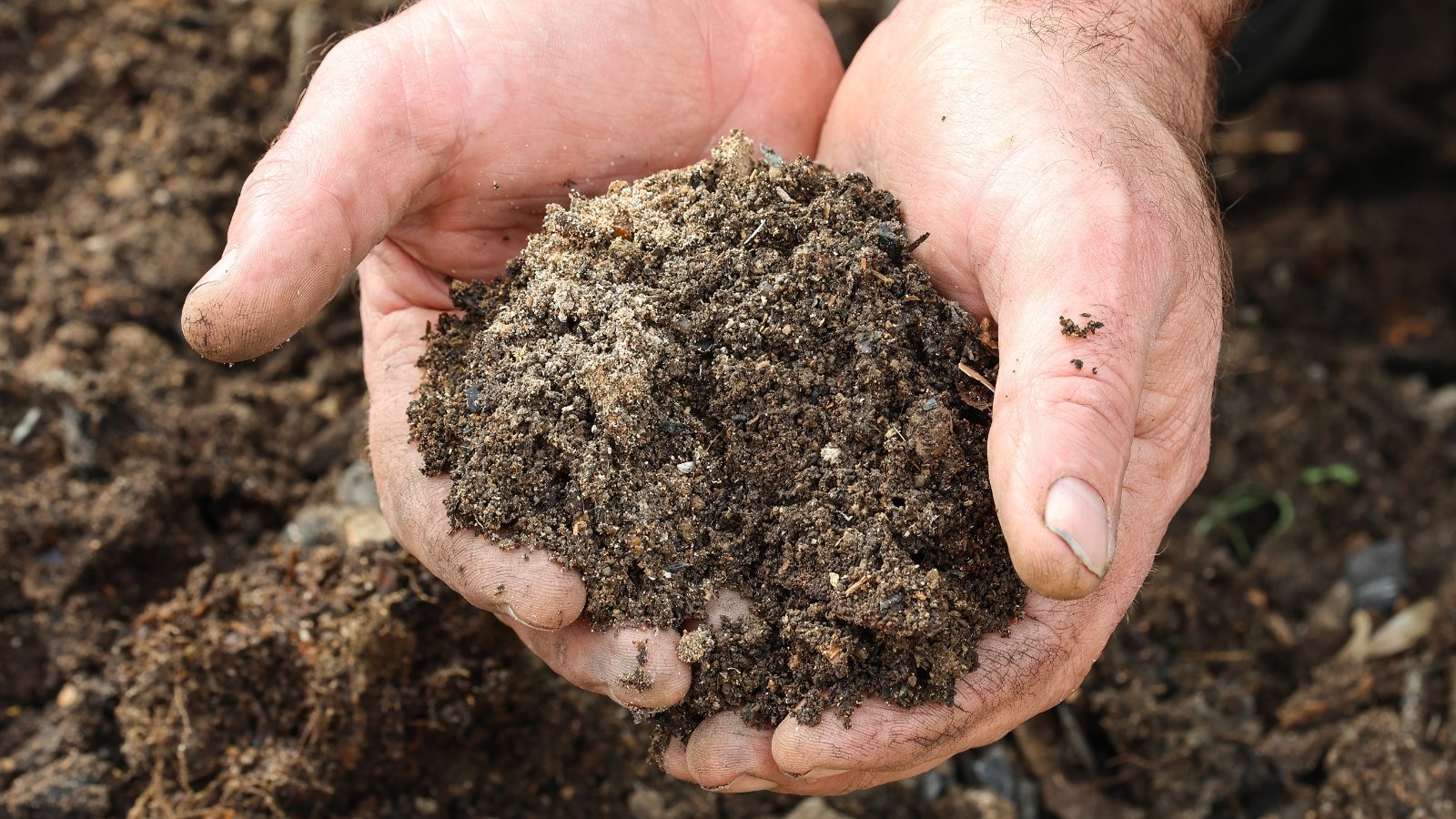
Opinions on fertilizing this plant vary. This is an efficient plant when it comes to nutrients, so technically it doesn’t have to have fertilizer to thrive. Working some compost into the soil at planting time should be sufficient.
If you choose to fertilize, apply a slow-release formula that is high in phosphorus. Just before blooming in late spring is the ideal time to fertilize. Potted plants will need more fertilizer as their soil doesn’t have as many nutrients available.
Maintenance
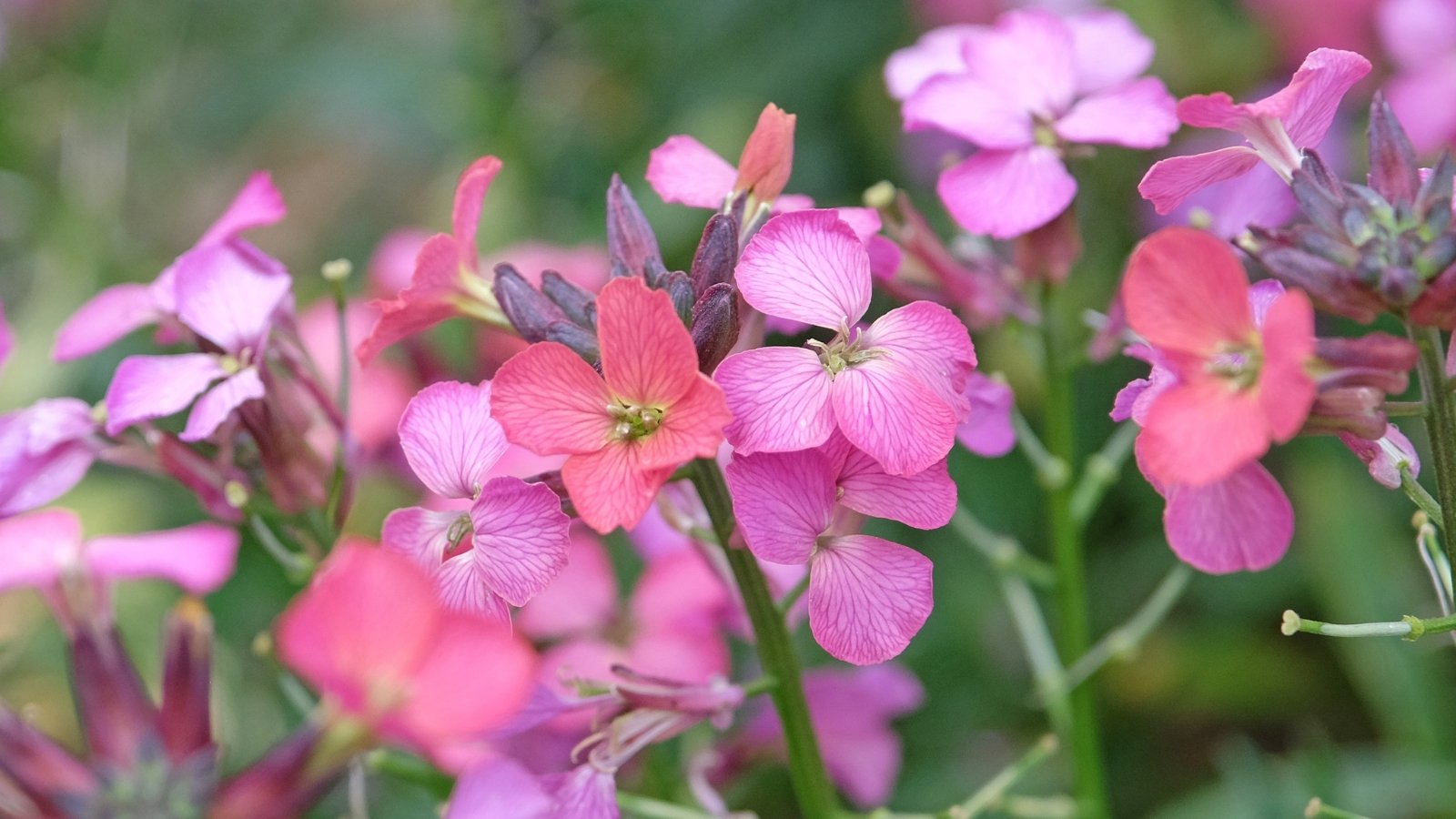
To keep your flowers blooming and plants looking full and happy, deadheading is a must. The more you deadhead, the more flowers your plants will produce.
Fall is the time for major pruning. In warm climates, this plant can act as an evergreen. To prevent it from growing leggy and sparse, trim the entire plant back by half when it finishes flowering. In cool climates, where the foliage will die back, prune it to a few inches above the soil in the fall.
Growing in Containers
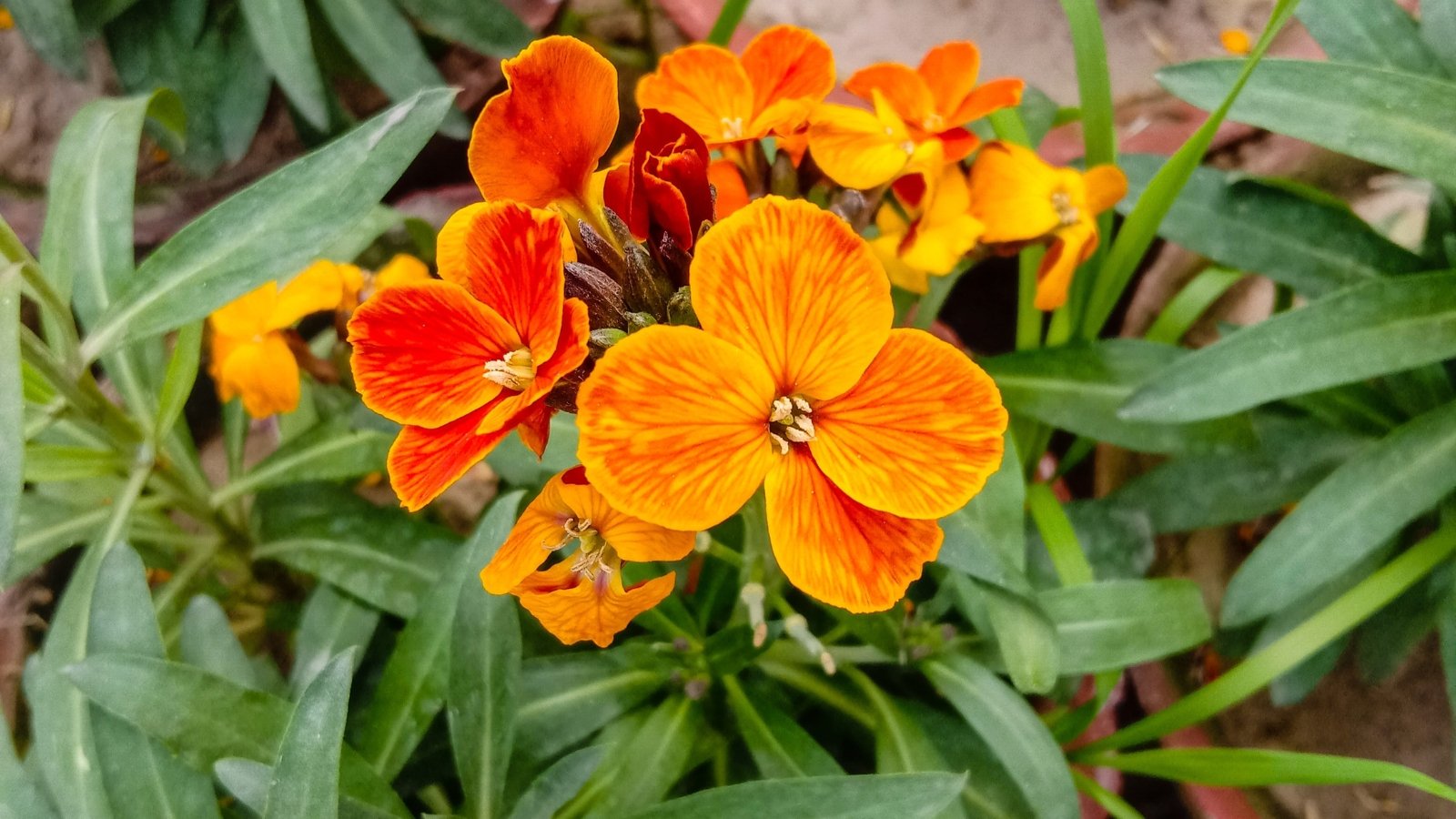
You can grow these flowers in containers, and they will be easy to care for as potted plants go. The type of soil is not important as long as it has proper drainage. Mix some sand or gravel in with your potting mix to improve the drainage.
Potted plants dry out faster than those in the ground. You’ll want to water your wallflowers in containers. Allow the soil to dry between waterings to prevent root rot.
Propagation
Before you decide to propagate your plant, find out if someone has that particular variety patented. You shouldn’t propagate these varieties. You can propagate perennial and biennial types by seeds or cuttings.
Seeds
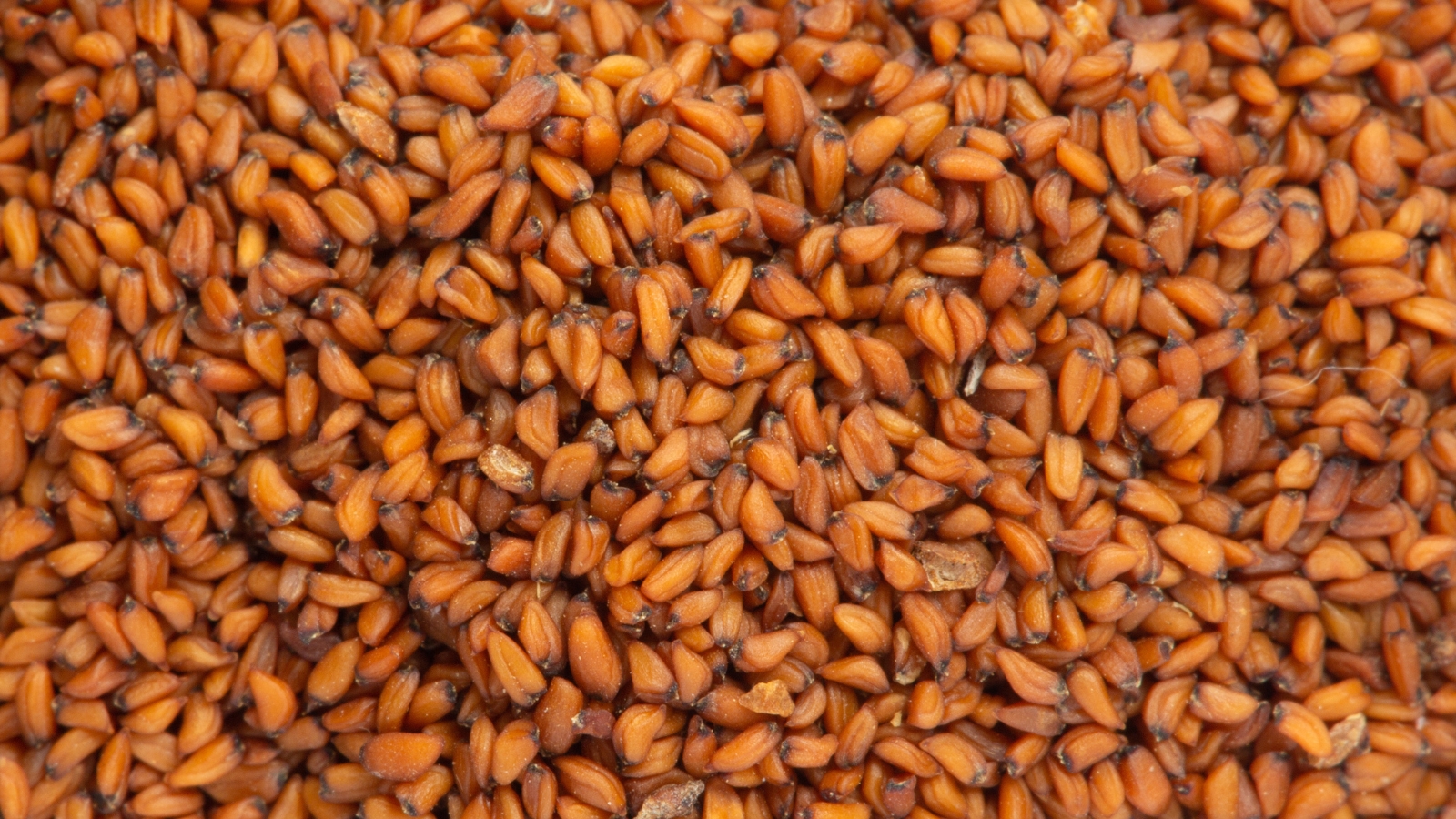
You can directly sow your wallflower seeds in the garden or start them indoors. Transplanting them isn’t an issue. The seeds need to be exposed to light in order to germinate. A light covering of soil (1/8 of an inch) is ok, but it’s better to simply press them into the surface of the soil. They need to be exposed to light during the germination process and kept moist.
Cuttings
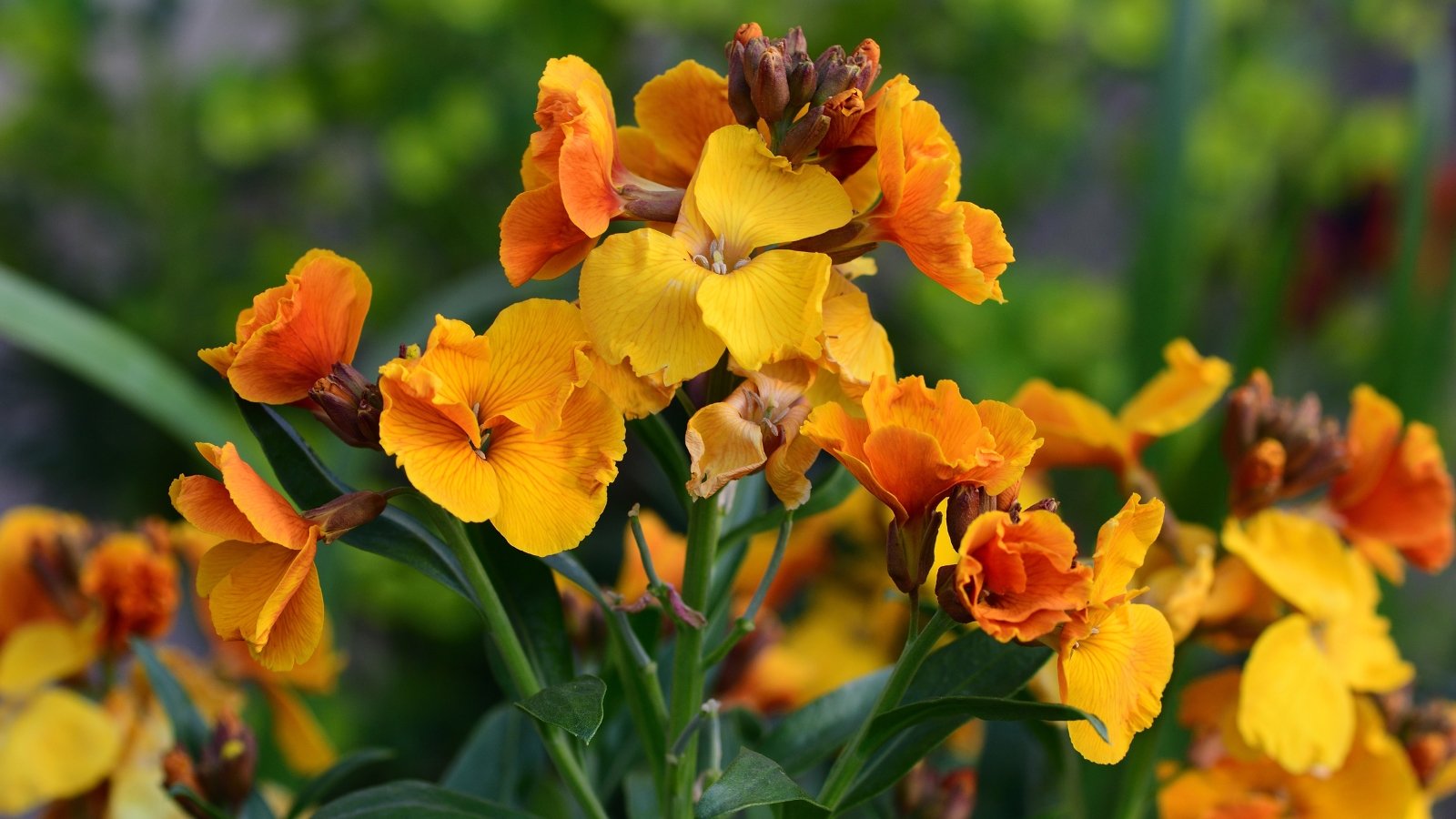
To propagate from cuttings, you’ll want to get started in late spring when the plant has new, soft growth. Take cuttings of stems with at least one node, preferably more. Use a sharp, clean knife to slice through the stem just below a node. Cut at a diagonal to give the cutting more rooting surface.
Remove all but the topmost leaves, and dip the cut end into a rooting hormone. Plant your cuttings in small pots with standard potting mix, and keep them warm and moist. When you see new growth, you’ll know that your propagation is successful! Transplant your wallflower plant into a larger container or directly into the garden.
Popular Varieties
Bowles’s Mauve
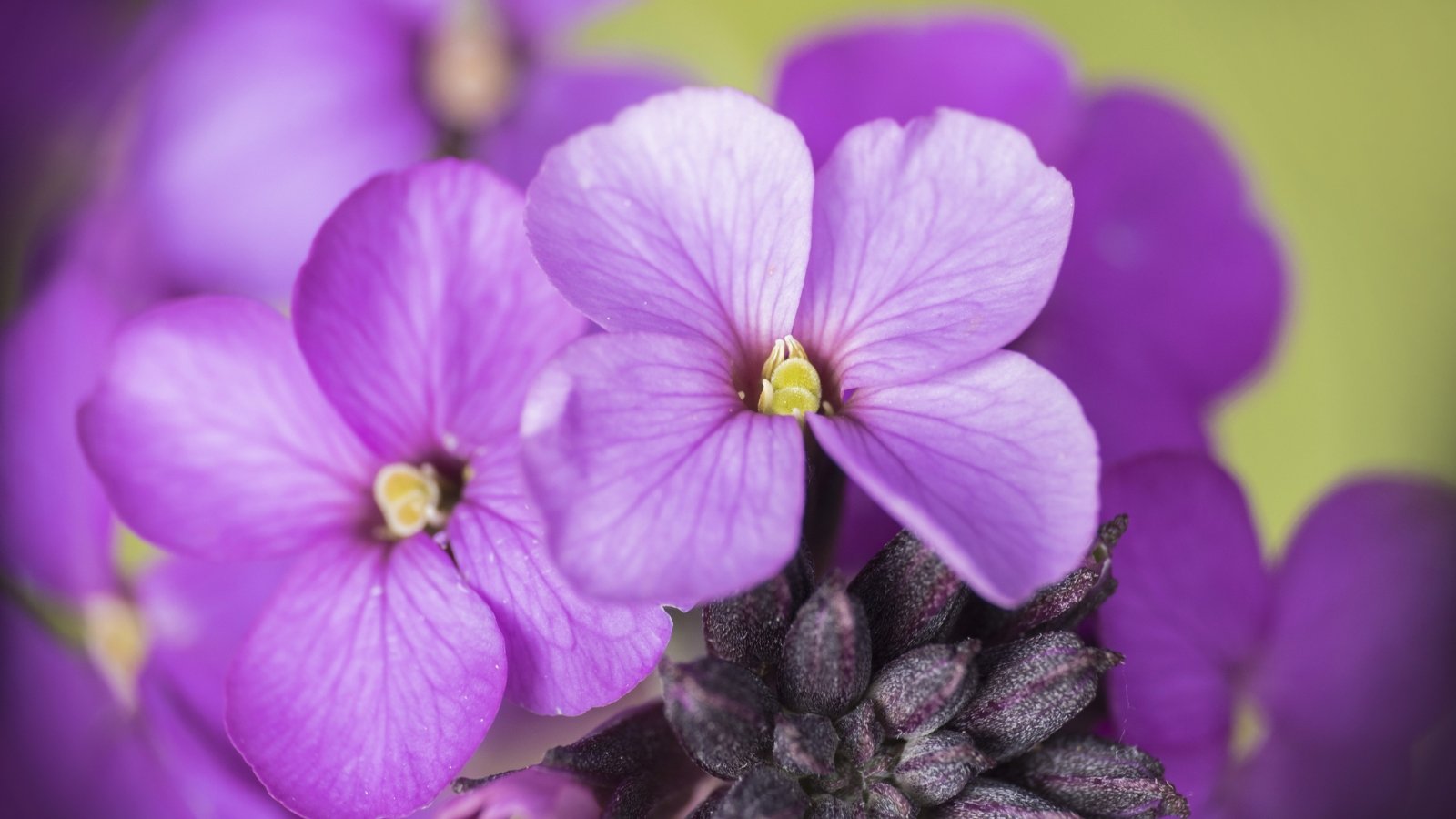
Named for a great English gardener, Edward Augustus Bowles, this purple flowering variety is certain to please. It is a sub-shrub type of wallflower that reaches up to one and a half feet tall at maturity. It’s a recipient of the Royal Horticultural Society’s Award of Garden Merit. It is a long-blooming variety, producing a bounty of blooms from late spring well into the fall.
Jubilee Gold
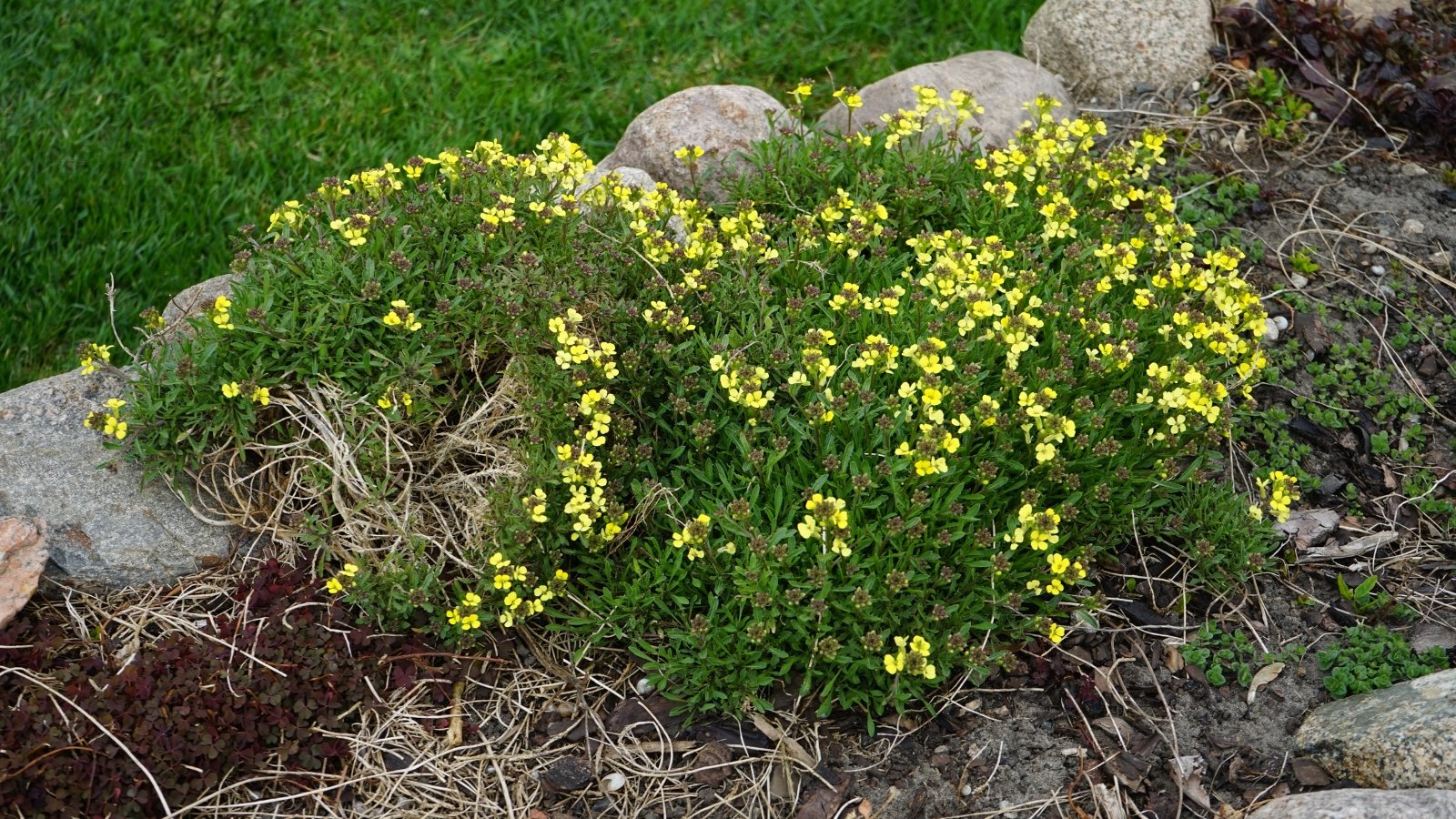
This cheerful, happy variety is a Siberian wallflower with sunny yellow flowers. It makes a nice ground cover or bedding plant, staying fairly close to the ground with dense foliage. It also looks stunning peeking out between stones in a rock wall. This plant is semi-evergreen and blooms from spring into summer.
Night Skies
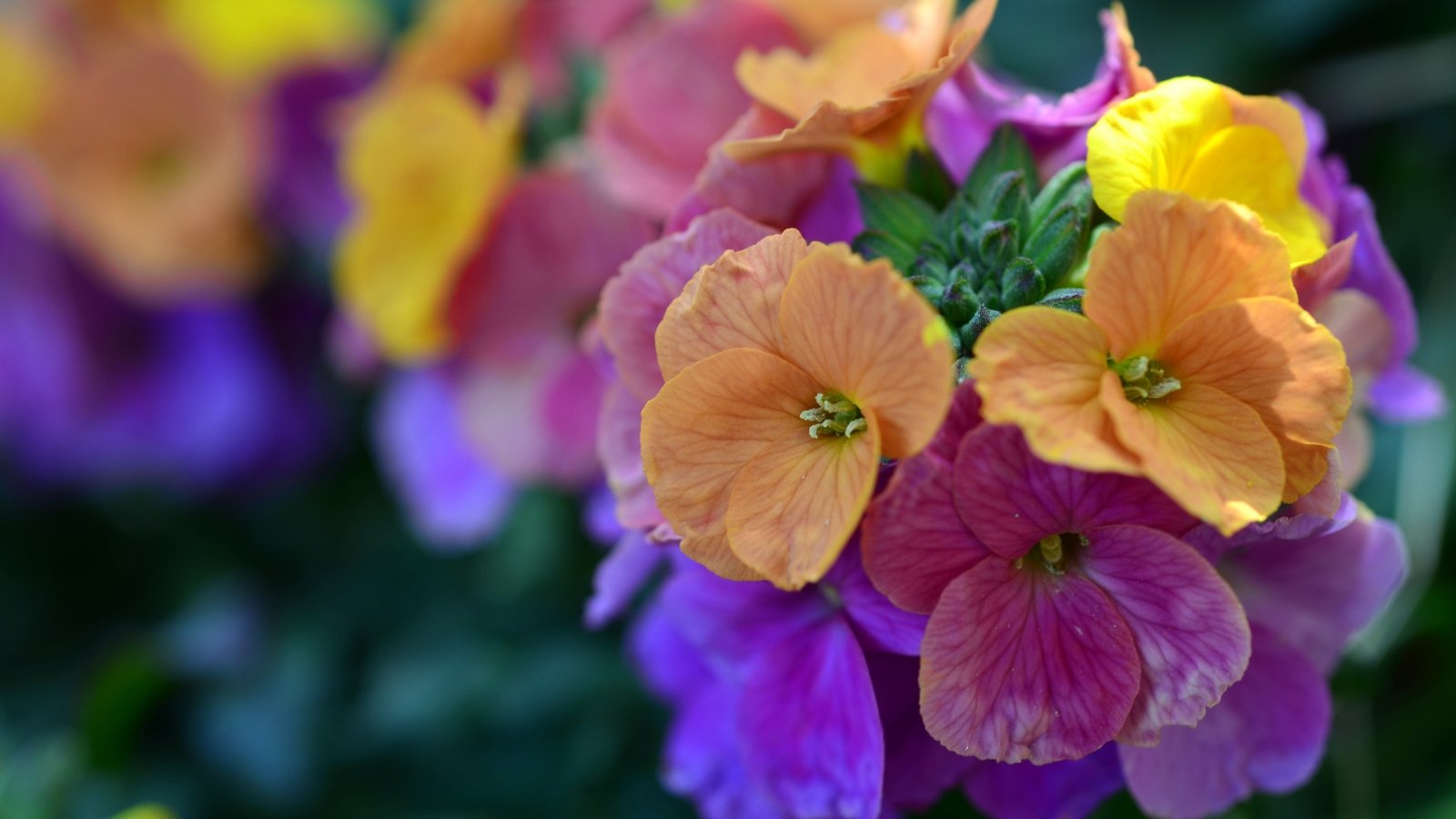
The Sky series of hybrids have beautiful flowering habits. ‘Night Skies’ blooms initially in shades of peach and lavender. The flowers then mature to deeper shades of purple. Many colors can exist on a plant at the same time. This is a compact variety, at only one foot tall, and is semi-evergreen. It can bloom from spring through fall.
Persian Carpet
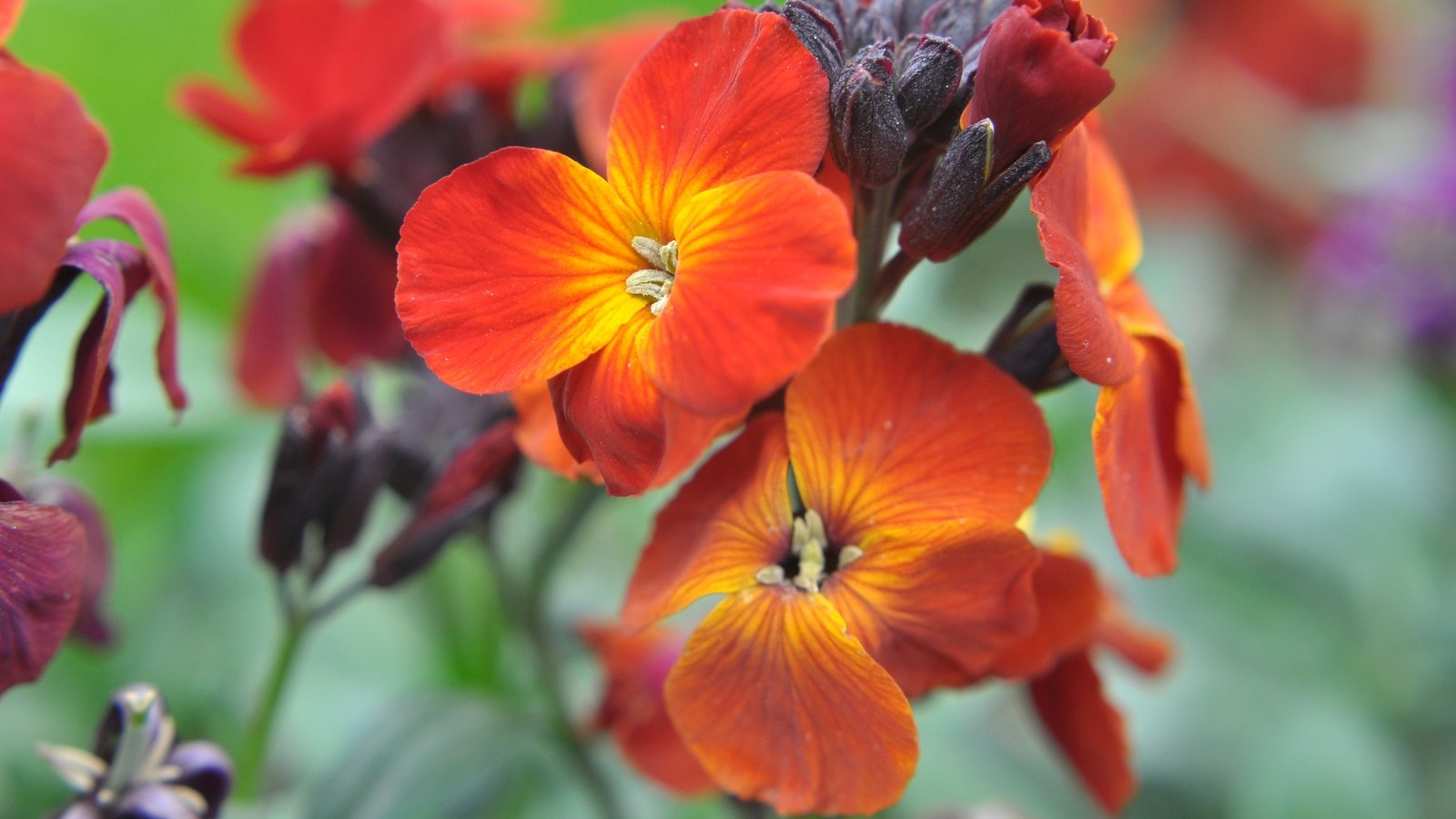
A springtime bloomer, ‘Persian Carpet’ produces different colored flowers. The fragrant blooms come in shades of gold, cream, red, purple, and orange. The shrubby plants make a stunning mass planting, creating the appearance of a colorful carpet of flowers.
Common Problems
As with many plants in the Brassica family, wallflowers are not without their issues. Overall they are easy to maintain, but there are a few challenges to watch for.
Pests

The fact that these plants prefer drier conditions makes them slightly less susceptible to pests than their related plants. However, you may encounter issues with aphids or spider mites. Slugs and snails can also be an issue. Plant your wallflowers away from other brassicas and vegetables to avoid common pests that would be attracted to both.
If you notice aphids or spider mites feeding on the plant’s sap, blast them with a stream of water from a hose. Do this for a few days until the problem subsides. Slugs and snails can be handled with organic slug bait or beer traps. You can also pick them off by hand at dusk.
Diseases
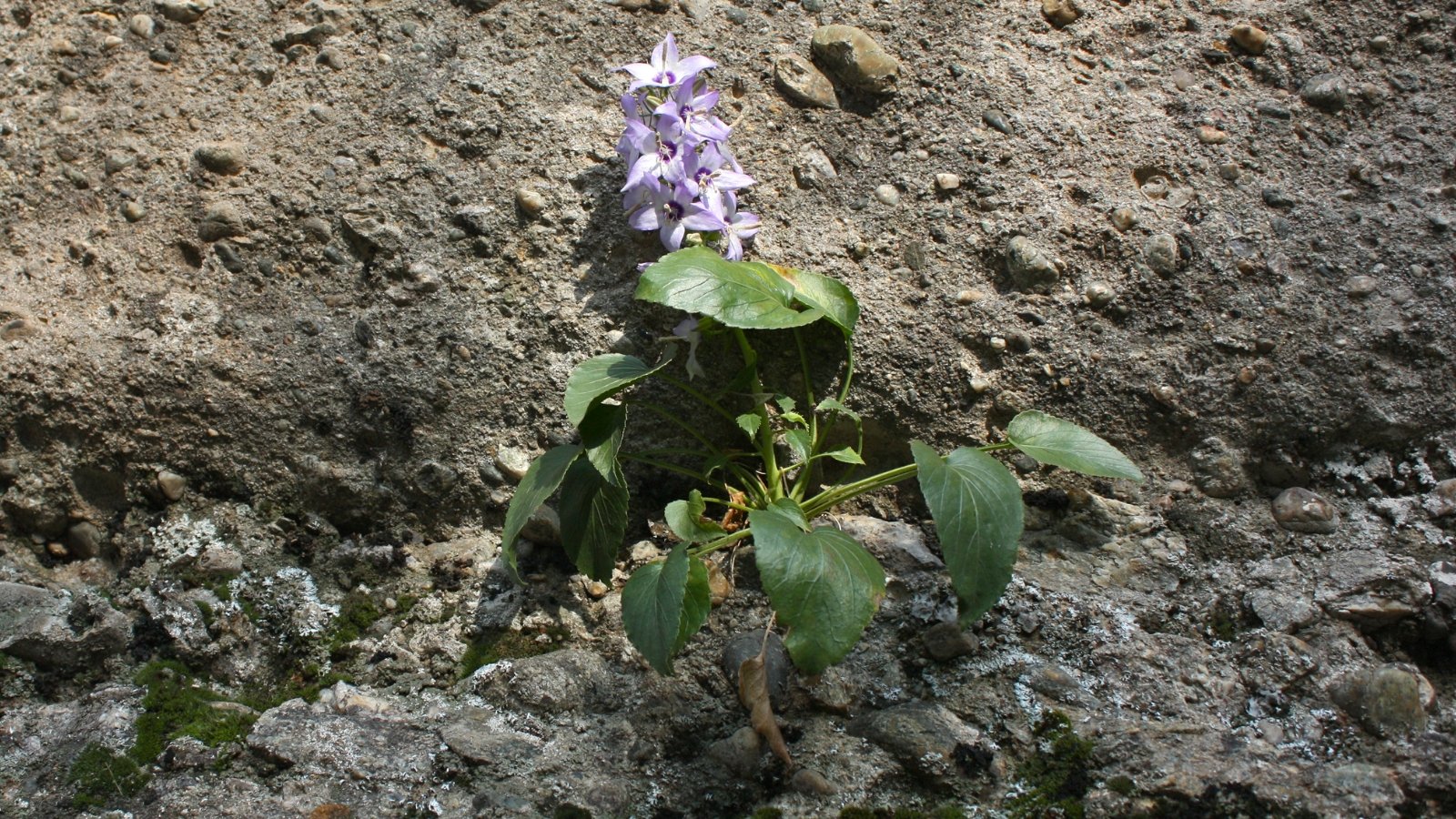
The most common diseases to affect this plant are fungal in nature. Keep in mind that they are not tolerant of damp conditions and always need proper drainage.
Neem oil is effective in treating rust and powdery mildew by stopping the spread of the infection to healthy parts of the plant. Proper drainage is vital for protecting this plant against root rot. Remove any damaged leaves you notice during the growing season.
Leggy Growth
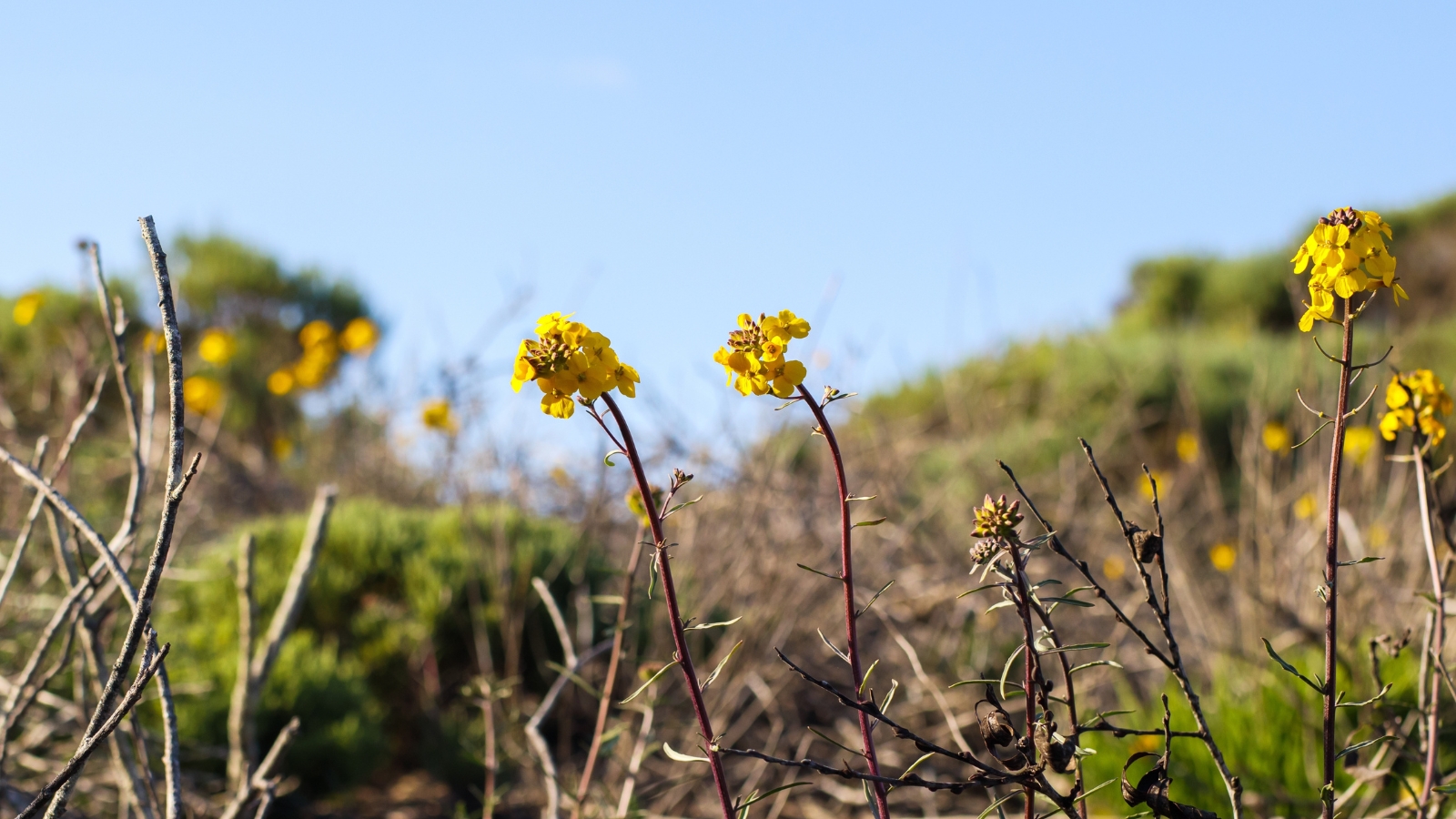
Wallflowers can become leggy and spindly over time. They may lose their dense, shrubby appearance and become less attractive overall. Pruning is important for maintaining this plant’s physical beauty. Make sure to prune it yearly to keep the growth bushy and attractive.
Frequently Asked Questions
Yes, they contain a cardiotonic glucoside that is dangerous for pets and humans to consume.
Most are short-lived perennials. They will look their best for the first two years, and if maintained well they can last a few more years. They tend to get leggy over time though, don’t expect these to live more than five years.
Final Thoughts
Wallflower plants are anything but shy. These fun flowering plants are wonderfully tolerant of dry weather and poor soil. They can pop up in the more interesting places, as well! Enjoy these plants in the rock garden, flower bed, or cutting garden as a low-maintenance, fragrant flowering plant.
